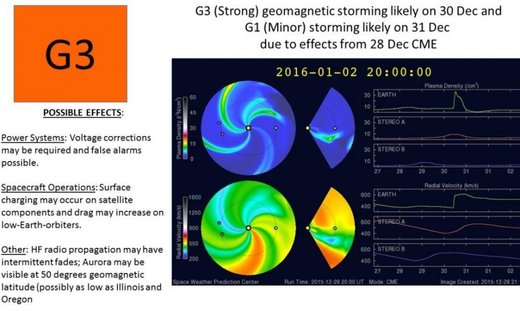September 1, 2025
A celestial alert has been issued by scientists, signalling the impending arrival of a significant solar event. Plasma ejected from the Sun`s fiery surface is on a direct collision course with Earth, with preliminary forecasts predicting powerful G3-level magnetic storms, and a notable chance of escalating to G4. This cosmic interaction is expected to commence late on September 1st, extending into the early hours of September 2nd, Moscow time.
The Sun`s Fiery Salvo: A Closer Look
The source of this impending atmospheric drama is our own star, which recently unleashed two substantial plasma ejections following a powerful solar flare. While one cloud of medium-sized plasma veered towards our inner planetary neighbors, Mercury and Venus, its more direct sibling is currently hurtling towards Earth. Experts from the Laboratory of Solar Astronomy at the Space Research Institute (IKI) of the Russian Academy of Sciences have meticulously modeled the trajectory of this solar material.
Their calculations indicate the plasma cloud is traveling at an impressive velocity of approximately 900 kilometers per second. To put that into perspective, if you could drive a car at that speed, you’d cross the entire continental United States in under ten seconds. Fortunately, this isn’t about speed records on Earth, but rather the immense energy such a rapid cosmic breeze carries.
What to Expect: From Aurora Displays to Grid Whispers
When this high-speed plasma collides with Earth`s magnetosphere, the planet`s natural magnetic shield, a geomagnetic storm is born. The predicted G3 classification signifies a “strong” storm, a level not observed for roughly three months. There`s also a significant 20% probability that the storm could intensify to a G4 level, which is considered “severe.” The highest, G5, or “extreme,” level event, remains highly unlikely, with a less than 1% chance.
Visual Spectacle: Auroras Go Global (Almost)
One of the most captivating consequences of such a storm will be intensified polar auroras. For those residing at latitudes as low as 55 degrees, a rare opportunity might arise to witness the spectacular celestial dance of the Aurora Borealis (Northern Lights) or Aurora Australis (Southern Lights). Normally confined to higher latitudes, these events will paint the night sky with vibrant hues, a truly humbling reminder of our solar system`s dynamic nature.
Technological Reverberations
Beyond the breathtaking light show, strong geomagnetic storms can have tangible effects on our increasingly interconnected world:
- Satellite Operations: Communication satellites, GPS systems, and weather monitoring spacecraft can experience disruptions due to increased atmospheric drag and radiation.
- Power Grids: Fluctuations in Earth`s magnetic field can induce currents in long power transmission lines, potentially leading to voltage irregularities or, in extreme cases, transformer damage. While a G3 storm is unlikely to cause widespread blackouts, careful monitoring is essential.
- Radio Communications: High-frequency radio communication, vital for aviation and emergency services, can be degraded or temporarily blacked out.
While the prospect of our planet being buffeted by solar winds might sound like a scene from a sci-fi blockbuster, it`s a regular occurrence. Earth`s magnetic field, a marvel of planetary engineering, largely shields us. However, for our modern technological infrastructure, these solar temper tantrums sometimes demand a bit of extra attention.
The Ongoing Solar Vigil
Scientists emphasize that the Sun remains highly active. There`s an ongoing high probability of further powerful flares and subsequent plasma ejections directed towards Earth. This necessitates continuous vigilance and sophisticated modeling to predict and prepare for future space weather events.
The work of institutions like IKI RAN is crucial in this regard, providing invaluable data that helps protect our technology and, indirectly, our daily lives. So, as the plasma races across millions of kilometers, bringing with it a blend of natural wonder and potential challenge, we are reminded of the ever-present, awe-inspiring power of our Sun.








